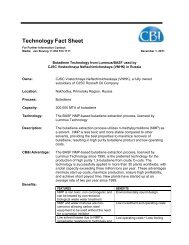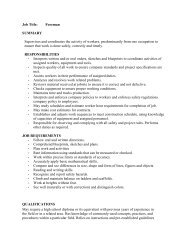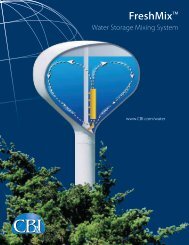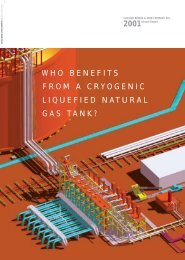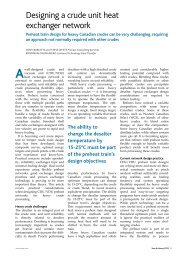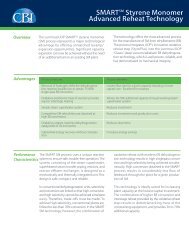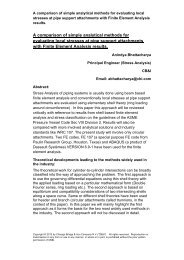In this issue - CB&I
In this issue - CB&I
In this issue - CB&I
Create successful ePaper yourself
Turn your PDF publications into a flip-book with our unique Google optimized e-Paper software.
AUSTRALIA<br />
CB&I Completes Clean Fuels Project in Australia<br />
CB&I provided the engineering, procurement, construction and precommissioning<br />
for a new hydrodesulfurization (HDS) plant at Shell's<br />
refinery in Geelong, Australia, participating in one of the major<br />
refinery development projects in Australia.<br />
CB&I has a long tradition of working in Australia and has participated in<br />
major refinery development projects in Australia for more than 50<br />
years. <strong>In</strong> March 2002 CB&I was awarded a lump-sum turnkey EPC<br />
contract valued in excess of A$90 million (approximately US$50 million)<br />
by Shell Refining (Australia) Pty. Ltd. for a new Hydrodesulfurization<br />
(HDS) plant at Shell's refinery in Geelong, Victoria, Australia. Our<br />
relationship with Shell is very extensive on a global basis and, in<br />
Australia, has included involvement in the most recent major projects<br />
undertaken at both the Geelong Refinery near Melbourne, and Clyde<br />
refinery in Sydney. The Shell Geelong Refinery, situated approximately<br />
70km Southwest of Melbourne, is the second-largest refinery in<br />
Australia and produces 15 per cent of the country's petroleum products<br />
(around 5.3 million tonnes of material per year) and about 50 per cent of<br />
Victoria's petrol. This 50 year old refinery is the larger of the two Shell<br />
refineries in Australia.<br />
Following the global drive to cleaner petrol and diesel, the HDS plant,<br />
which has a design capacity of 6,000 tonnes per day, is designed to<br />
enable Shell to produce ultra-low sulfur diesel to meet the Australian<br />
Government's new clean fuels specifications that will become effective<br />
from January 2006. The plant acts as a reactor, removing sulfur from<br />
diesel by converting it into hydrogen sulfide, which is subsequently<br />
converted into solid sulfur for use as fertilizer. Lowering the sulfur<br />
content of diesel in turn reduces particulate emissions from diesel<br />
engines, resulting in a significant improvement in air quality. CB&I was<br />
responsible for the detailed engineering, procurement, construction<br />
and pre-commissioning of the project.<br />
Site works began in early July 2002 with the clearing of disused plant<br />
and excavations in preparation for pouring of 3,400 cubic meters of<br />
concrete which would form the foundations for the plant.<br />
<strong>In</strong> parallel with the civil works, mechanical erection of 14 pipe rack and<br />
process modules started in late July 2002 at a yard established<br />
specifically for modularization. This yard was located on the Brisbane<br />
River approximately 2,400km to the north of the Shell site.<br />
Mechanical erection at the Geelong site commenced with the<br />
placement of pipe rack modules, 24m(L) x 8m(W) x 7m(H), onto<br />
foundations at the end of February 2003. <strong>In</strong> all over 500 tonnes of<br />
modules were placed by the end of June 2003. The centerpiece of the<br />
plant, the 300 tonne reactor, was placed in October 2003 with<br />
mechanical and electrical and instrumentation works continuing<br />
through to early 2004.<br />
Our team worked hard to meet Shell's best-in-class operational criteria.<br />
Australia's most southerly sited refinery is now equipped to produce<br />
fuels with a sulfur content of less than 50 ppm to meet the country's<br />
new fuel specifications and to help secure its long-term future.<br />
Mike Trzeciak



